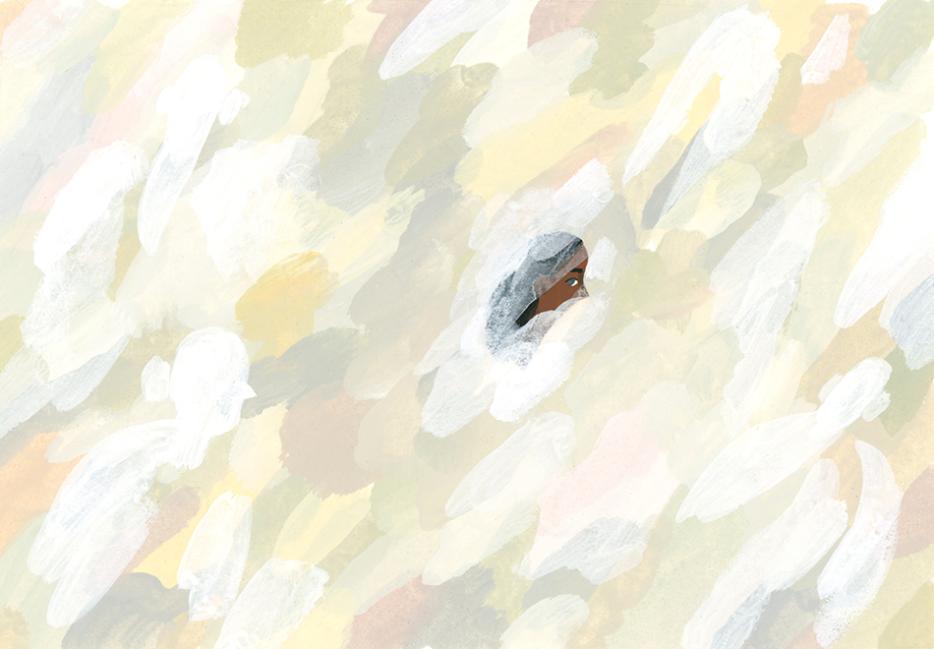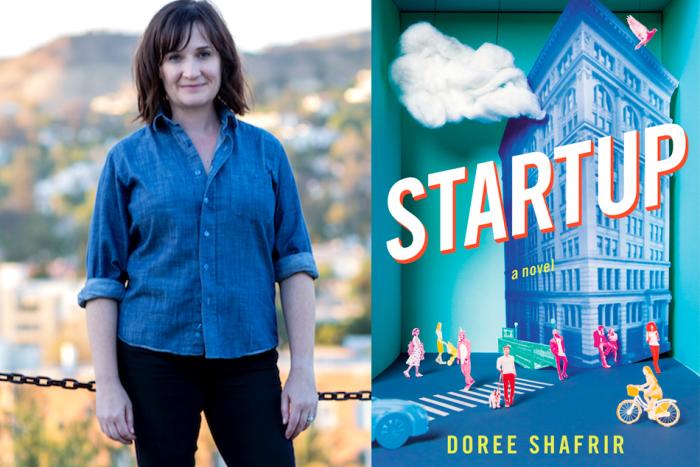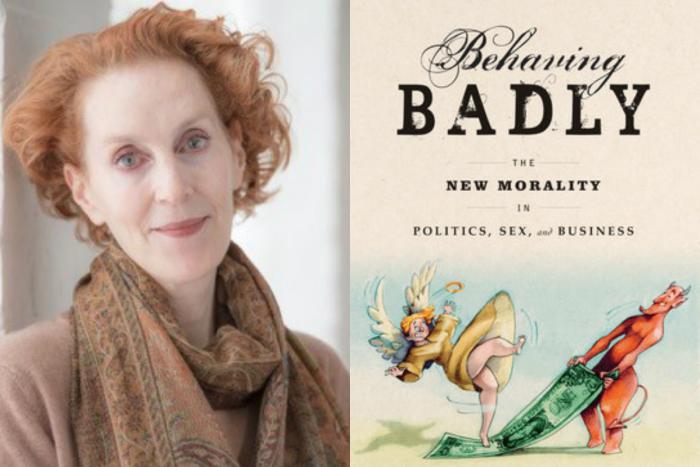On March 15, 2014, my cousin Masud Khalif was murdered at a restaurant two blocks away from the building at the Scarborough intersection of Markham and Lawrence we both once called home. His killer later used Masud’s height, weight, and black skin as reasons he believed my cousin was a threat to him. This is how he justified killing him.
Masud was my first cousin, but he felt more like an older brother to me. We grew up together. We went to the University of Toronto together. We spent endless nights together bullshitting our way through essays only a few hours before their deadlines. We shared friends, and countless memories. I actually almost always hated referring to him as my cousin, because he was so much more than that to me. When he would threaten ex-partners of mine or give me money whenever I was broke (which was almost always), he was like my protective brother. When we spent nearly every weekend together out and about downtown, trying to forget the stresses of our studies, jobs, or home lives, he was like my friend. He was always great for a guaranteed laugh.
The last night I spent with Masud, we spoke about our futures. He told me that despite all odds, he was going to become a lawyer. He said this with a tone that was so matter-of-fact: you knew it would happen because he wanted it to happen. I always envied how bold and courageous he was, and how adamant he was about not letting anyone in this life tell him who or what he could be. There he was, a black man who didn’t let imposter syndrome dictate his destiny.
In that same conversation he also spoke very matter-of-factly about my future: I was going to be a writer, and a good one at that. I was twenty-four years old at the time, with one degree under my belt, working as a personal assistant, and confused about who I was or where I was headed. I always dreamed of being a writer but didn’t know how that could happen, and it meant everything to me that he had hope for something I had completely given up on. There I was, a black woman who let imposter syndrome dictate her destiny.
That night we ended a five-hour evening together with a grand hug. He told me why I was his favourite cousin. We exchanged some laughs and said “I love you” a few times before I watched him walk down the pathway of my house and onto the street.
I felt uneasy.
Two years later, in March of 2016, I walked up to a small podium in a York University lecture hall in Toronto with anxiety swimming through my body. I was there to give a keynote speech for the Black Futures Now conference. I had decided earlier that day that before I presented my speech I would ask everyone to take part in a breathing exercise. The room was dead silent, but the audience gave me warm smiles when I asked them to join me and breathe.
Collectively, we inhaled in for ten seconds, telling ourselves that we were “breathing in the new.” Before releasing our breath, we told ourselves that we were “getting rid of the old.” We did this twice, and then I began my speech.
I learned this breathing exercise during therapy in 2014 while I was in the process of mourning Masud. After the brutal murders of Alton Sterling and Philando Castile, both black men shot by police officers last year, I wanted us to practice this exercise together. I believe all black folks—today and for the past five centuries—are in a state of mourning.
*
A week after Masud’s death, I leaned on the hood of my car and watched a group of men place his body into a grave. I don’t remember what I was thinking at that exact moment, nor do I remember what went through my head when I touched his dead body for the last time at a Scarborough masjid, a few blocks north of the building where we grew up.
For three months after Masud’s death, I had no real control over my thoughts or emotions. I would find myself crying at the grocery store while searching for ripe avocados because a Lorde song reminded me of that time we had dinner in my living room, arguing about what to play next. I found myself outside movie theatres frantically following tall black men, thinking they were him.
I found myself doing things to my body and health I never would have imagined doing before. I thought things I had never considered thinking before. I flew on planes a lot for work that year, and for the first time, I felt no fear each time the plane would push off the ground—because I wasn’t afraid to die. “If it happens, I’ll see him again,” I would tell myself in every moment when a healthy, normal person would feel concern for their life. But “health” is a normative term, and I did not feel “normal.”
After two months I found a therapist, and on a week-to-week basis, he taught me how to breathe again. I never felt like I was doing it right. I began writing, actively, for the first time in my life. After two months of breathing exercises, I quit my job, canceled my lease, and used my minimal savings to book a trip to Somalia. I had never been to Somalia, and didn’t know how to speak my mother’s tongue, yet I was convinced that it was a practical idea to move there. Months of depression had consumed me. I desperately needed to get away.
*
A janazah is a three-day period of mourning Muslims observe before we bury a loved one’s body. The first day of Masud’s janazah, my friends sat with me in a staircase in the building where Masud and I grew up. They were there for me—like black women always are for their kin and community—but they were also there for themselves: they too had lost a friend. One told me it would take a year of mourning before the pain would stop: one year for anniversaries, birthdays, and memories to pass. She said that by the one-year anniversary of his passing it would begin to become easier.
So I counted for 365 days.
Each day I searched through social media, calendars, text messages, and emails to remind myself of that particular date one year prior, and figure out where Masud had been. Did I hear from him that day? Did we hang out? Did I wake up to his loud steps in my downtown apartment?
I would actively take a walk down memory lane each day. I would smile or laugh at our memories together before I would spend the night crying myself to sleep.
By March 15, 2015—one year after Masud’s passing—I realized my friend was only partially right. When you are mourning, the pain doesn’t go away. It never does. But after some time, it eases: you learn how to live with it, but never fully escape from it. The only significant change I had noticed after one year of mourning was my breathing: the anxiety attacks began to decrease, and I found myself controlling them better than I was able to before.
So here I am now, three years after Masud was killed. I’ve slowly figured out how to peel myself off the ground and continue to live life. But every so often I find myself back there again. Glued to it. Because mourning never ends. You learn to wear it everywhere you go.
*
Jermaine Carby. Dionte Green. Mark Carson. Dontre Hamilton. Eric Garner. John Crawford III. Michael Brown Jr. Tanisha Anderson. Tamir Rice. Jerame Reid. Tony Robinson. Phillip White. Eric Harris. Walter Scott. Freddie Gray. Jonathan Sanders. Sandra Bland. India Kager. Andrew Loku. Alex Wettlaufer. Alton Sterling. Philando Castile.
Too many more.
When we see the faces of these men and women on our screens and their names in headlines around the world, behind each of them is a community of people—mothers, sisters, fathers, grandparents, friends, and loved ones—only beginning this process of mourning. They are experiencing a change in their breathing patterns. They will spend the next few days, weeks, months, or years learning how to breathe again.
I asked that group at York to do the same breathing exercise I have done since Masud was killed because, in the wake of these unjust slayings, I believe these families are not alone in their loss. And I don’t believe you need to know a black person who was murdered intimately in order to mourn their loss. I believe you just have to be black. And I believe that outside of "improvisation, transcendence and resilience," the DNA of black people for the past five centuries has involved an intimate relationship with death and mourning. It’s an invasion of our collective spirits and ancestry.
During the Jim Crow era, on average, thirty-nine black people were lynched per year in America, and during the worst year of that period, that number rose to 161. In 2015 alone, 258 black people were killed by United States police officers. The threat to black existence and black life has never ended, thus black mourning hasn’t ended; and so long as the conditions remain that ensure black people will die for or because of their blackness, so too will black suffering. Hundreds of black women across the Americas, in this moment, are suffering: they are reflecting on how they birthed, raised, loved, and then buried their children. Hundreds of black women are trying their best to learn how to breathe again.
In the words of James Baldwin: “To be a Negro in this country and to be relatively conscious is to be in a rage almost all the time.”
When we as black people turn on our television sets and see a police officer chokehold a father to death for selling “loosies,” or shoot and kill a young black boy for playing with a toy gun in a park, we collectively experience a pain that the rest of society does not understand and cannot fully comprehend. They feel saddened while we mourn our humanity. We watch these visuals that are broadcasted endlessly and everywhere, constant reminders that we live in a society that believes our humanity does not matter. We carry the pain of those dehumanizing visuals and cries of “I can’t breathe” with us through our workdays and into our beds before we sleep. And the pain of every video or story of these inhumane slayings piles up. It piles up until we forget how to breathe.
These statistics do not take into account the black trans women, queer, non-binary and non-gender conforming folks who are murdered at alarming rates, whose deaths are never publicly recognized or collectively mourned, whose names rarely penetrate the public consciousness. Even the “data” aren’t available for those who demand statistics: there are no existing accurate public resources that provide the numbers of how many queer and trans black people go missing or are murdered in both Canada and the USA.
*
The reality of being a black person in the Americas is to live with a consciousness of being a black subject in a world of white power. I am so hyper-aware of perceptions of my blackness that when I consider demanding better service at a restaurant, I know that to the outside world I am embodying the “angry black woman,” so instead I choose to keep my mouth shut. I am aware when I walk into stores that I am under surveillance, that my black skin summons it, and so I police my own actions before someone else does. I am aware that my skin is enough for me to face employment and housing discrimination, just as I am aware that my black skin can lead to economic racism, higher charges of interest rates and fees. I am aware that as a black woman in Toronto, I am three times more likely to be carded by police than anyone else. I am aware that my black skin not only criminalizes me, it dehumanizes my life.
I am aware that because my black skin is enough to get me killed, people will spend more time deliberating why I deserved death than they will mourning my life.
I am hyper-aware that my blackness is a social uniform that functions to alienate me. My blackness is the object of images, language and ideologies that are pre-determined and constructed because of my social uniform. In the words of Frantz Fanon, “I am over-determined from without.” It is the fact of blackness.
*
But, for as long as black people have existed here, we have known improvisation, transcendence, and resilience. We continuously mobilize and strategize to challenge the system that works against us in efforts of finding black liberation. For as long as we have existed here, we have formulated black liberation movements: The Black Liberation Army, The Black Arts Movement, The Black Panthers, The Nova Scotia Association for the Advancement of Coloured People, The Nation of Islam, and now Black Lives Matter. But we must be honest with ourselves about what black liberation has often looked like in the past and today: patriarchal, heteronormative, classist, cis-gendered, with a destructive focus on the humanization of black masculinity. We teach each other that black identity is singular, thus not inclusive. Our discussions of the dehumanization and invisibility of black life do not include the alarming realities of transphobia, homophobia, poverty, patriarchy, or mental health.
A fight for black liberation will not succeed without love, support, compassion and, most importantly, understanding and (re)learning. Our black liberation movements will never fully succeed so long as we maintain heteronormative, cis-gendered, ableist, classist, and patriarchal agendas. The validity of black life is not just about black men. We must be actively aware of our own privileges as we continue to combat the ongoing oppression against black people everywhere.
Black men must learn to actively understand how they contribute to a culture of patriarchy.
Black cis-men and cis-women must learn to actively understand how we contribute to transphobia.
Black heterosexually identified folks must learn to actively understand how we contribute to a culture of homophobia.
We must stop allowing our collective definition of blackness to be understood as singular, because it is not. There are no binaries in blackness. There is a multiplicity. There is infinity. And we must honour that. Learning to breathe again means learning to breathe together.
For as long as we continue to live under a state that actively chooses to disavow our humanity and believe that we do not matter, black death and black mourning will remain an agonizing reality. It will continue to chip away at our sanity, our livelihood, our families. This is how you slowly die here—if you are not killed first. With every new name that we learn of, every face that becomes painfully imprinted into our memories, we must remind ourselves that we matter—all while remembering how to breathe.
Portions of this essay were originally delivered in the speech at York University that is mentioned in the piece.






